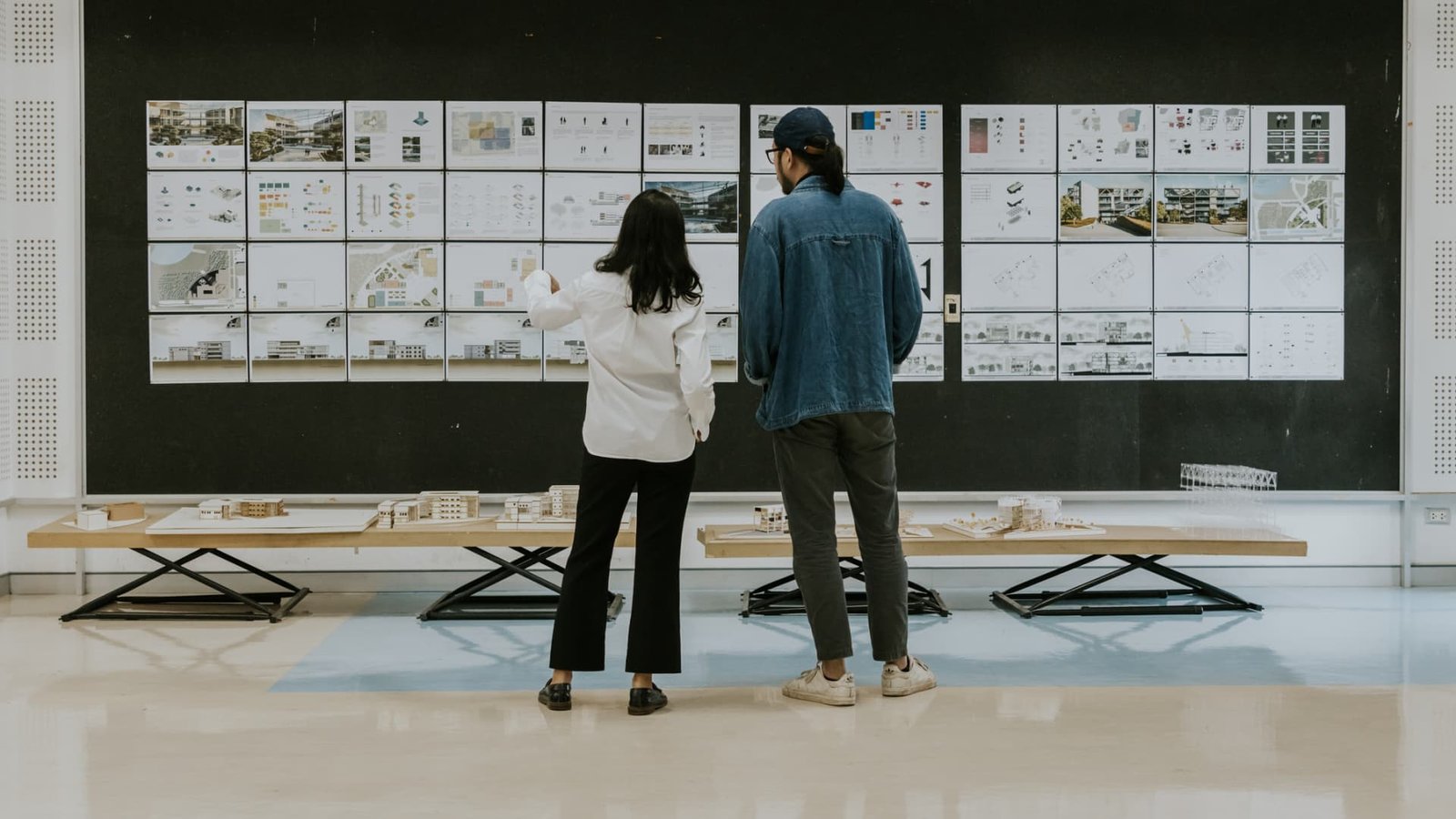Funding & Business
Architecture firms report decline in billings for commercial real estate

Two architecture teachers discuss a student’s final project work.
Erdark | E+ | Getty Images
A version of this article first appeared in the CNBC Property Play newsletter with Diana Olick. Property Play covers new and evolving opportunities for the real estate investor, from individuals to venture capitalists, private equity funds, family offices, institutional investors and large public companies. Sign up to receive future editions, straight to your inbox.
Architecture firms are reporting a drop in billings as concerns about the broader economy and tariffs impact commercial real estate development and spending.
The AIA/Deltek Architecture Billings Index (ABI) remained in negative territory in June with a score of 46.8, down from 47.2 in May. Anything below 50 is considered negative sentiment.
“Business conditions were soft nationwide in June, with a slight billing increase in the South for the first time since October,” said Kermit Baker, chief economist at AIA, the American Institute of Architects. “Other regions saw declining billings, though at a slower pace. While all specializations experienced softer billings, the decline slowed for commercial/industrial and institutional firms. Multifamily firms faced the weakest conditions, with further declines.”
One bright spot was inquiries into new projects, which increased for the second consecutive month and grew at the strongest pace since last fall with a score of 53.6. This suggests that clients are starting to send out requests for proposals and will start working with architecture firms on potential projects.
AIA notes that these inquiries do not necessarily translate into actual projects. The value of newly signed design contracts also fell for the 16th straight month. Billings are not likely to improve until the value of these new design contracts also sees gains.
The AIA also put out its midyear forecast:
First the good news: In spite of stubbornly high long-term interest rates, inflation rates stalled above the Federal Reserve Board’s target, falling consumer confidence scores, disappointing levels of home building activity, rising tariff rates for many inputs to construction, and construction labor shortages exacerbated by restrictive immigration policies, the outlook for the remainder of the year and into 2026 is largely unchanged from where it was at in the beginning of the year.
The bad news: The outlook for spending entering the year was very pessimistic.
The AIA forecasts that overall spending on nonresidential buildings, not adjusted for inflation, will increase only 1.7% this year and grow very modestly to just 2% next year.
Spending on the construction of manufacturing facilities, which had been a bright spot in recent years, is now expected to decline 2% this year, with an additional drop of 2.6% next year. Institutional facilities are expected to be the strongest sector with projected gains of 6.1% this year and another 3.8% in 2026.
In addition to a slowing economy, unclear and constantly changing tariff policy is creating growing uncertainty in the architect, engineer and construction services industry.
“Not knowing what products will cost in the future, whether they will be available, how these changes might affect their supply chain, and whether they will provoke a trade war with the exporting countries are all questions that the AEC industry is asking before proceeding with planned projects,” according to the report.
Funding & Business
Trade Republic Teams Up With Apollo, EQT in Private Markets Push

Trade Republic, the German online broker co-founded by ex-Merrill Lynch banker Christian Hecker, is teaming up with Apollo Global Management and EQT to offer clients access to private markets, a growing corner of finance that’s capturing the attention of retail investors.
Source link
Funding & Business
Options Traders Craving Volatility Look Past Fed to Jobs Data

Even as the Federal Reserve meeting and $5 trillion quarterly triple-witching options expiry loom over the equity market, volatility traders are also circling the upcoming jobs data on their calendars.
Source link
Funding & Business
Dynamic Pricing: Innovation or Exploitation?

From airline tickets to burgers, from groceries to gig work — technology now allows companies to change prices in real time, sometimes a hundred times a day, as grocery chain REMA 1000 in Norway does. Advocates say it maximizes efficiency and sometimes even helps consumers. Critics argue it can gouge buyers and underpay workers. The concept of prices as moving targets has been polarizing, but perception and timing play important roles in determining the winners and losers of dynamic pricing. (Source: Bloomberg)
Source link
-

 Business2 weeks ago
Business2 weeks agoThe Guardian view on Trump and the Fed: independence is no substitute for accountability | Editorial
-
Tools & Platforms1 month ago
Building Trust in Military AI Starts with Opening the Black Box – War on the Rocks
-

 Ethics & Policy2 months ago
Ethics & Policy2 months agoSDAIA Supports Saudi Arabia’s Leadership in Shaping Global AI Ethics, Policy, and Research – وكالة الأنباء السعودية
-

 Events & Conferences4 months ago
Events & Conferences4 months agoJourney to 1000 models: Scaling Instagram’s recommendation system
-

 Jobs & Careers3 months ago
Jobs & Careers3 months agoMumbai-based Perplexity Alternative Has 60k+ Users Without Funding
-

 Podcasts & Talks2 months ago
Podcasts & Talks2 months agoHappy 4th of July! 🎆 Made with Veo 3 in Gemini
-

 Education3 months ago
Education3 months agoVEX Robotics launches AI-powered classroom robotics system
-

 Education2 months ago
Education2 months agoMacron says UK and France have duty to tackle illegal migration ‘with humanity, solidarity and firmness’ – UK politics live | Politics
-

 Podcasts & Talks2 months ago
Podcasts & Talks2 months agoOpenAI 🤝 @teamganassi
-

 Funding & Business3 months ago
Funding & Business3 months agoKayak and Expedia race to build AI travel agents that turn social posts into itineraries











